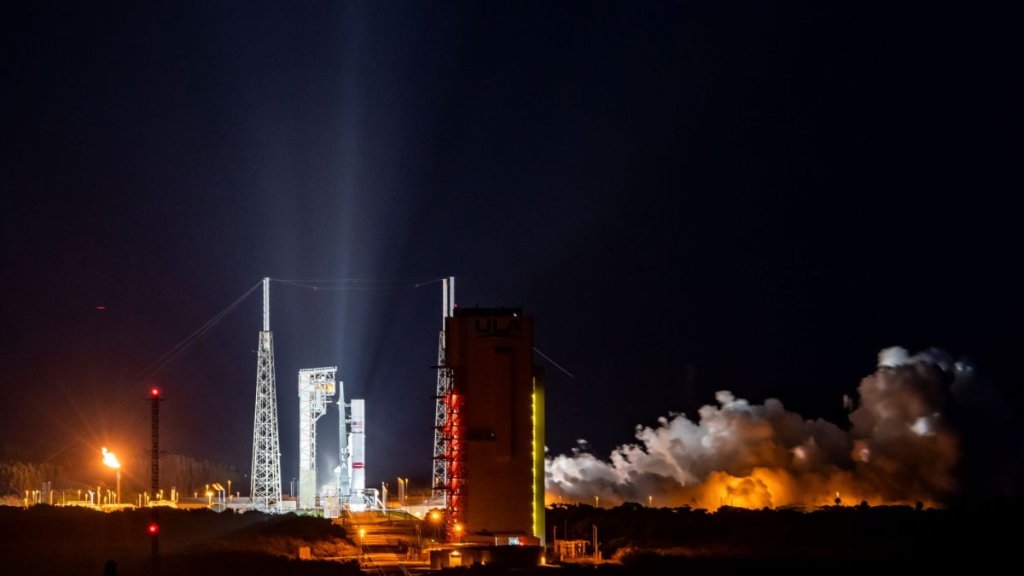
ULA test-fires new Vulcan Centaur rocket on the launch pad for 1st time (video) (Image Credit: Space.com)
United Launch Alliance (ULA)’s next-generation Vulcan Centaur rocket just took a big step toward its debut launch.
The Vulcan Centaur aced a crucial engine test tonight (June 7), firing up its two first-stage engines on the launch pad at Cape Canaveral Space Force Station in Florida for the first time ever.
The brief test, called a flight readiness firing (FRF), took place at 9:05 p.m. EDT (0105 GMT on June 8).
“The engine start sequence began at T-4.88 seconds, the engines throttled up to the target level for two seconds and then powered down. The entire FRF lasted for six seconds,” ULA wrote in an update tonight.
Related: Vulcan Centaur rocket: The space workhorse of tomorrow


The 202-foot-tall (62 meters) Vulcan Centaur is ULA’s rocket of the future, the replacement for the company’s venerable Atlas V and Delta IV launch vehicles.
Vulcan Centaur is powered by two of Blue Origin‘s BE-4 engines in its first stage and two RL-10 engines in its Centaur V upper stage. The vehicle can also accommodate up to six strap-on solid rocket boosters.
The rocket will be capable of lifting up to 7.7 tons (7 metric tons) of payload to geostationary orbit high above Earth when it’s up and running. Vulcan Centaur has not lifted off yet, but ULA is working to change that, as today’s test showed.
“We are more than 98% complete with the Vulcan qualification program, with the remaining items associated with the final Centaur V testing,” the company wrote in tonight’s update.
“The team is reviewing the data from the systems involved in today’s test and, in parallel, continue with the Centaur V test stand anomaly investigation,” they added. “Pending the data review and the investigation results, we will develop a plan for launch.”
The anomaly referenced in that update occurred on March 29, when a Centaur exploded on a test stand at NASA’s Marshall Space Flight Center in Alabama after experiencing a hydrogen leak. Prior to that incident, ULA had been targeting early May for Vulcan Centaur’s first-ever liftoff.
That debut flight will send the Peregrine lunar lander, built by Pittsburgh company Astrobotic, toward the moon. ULA representatives have said the mission could launch as soon as this summer, but the company has yet to set a new target date.
“Testing is an integral part of our launch vehicle development program, and we will fly when we believe it is safe to launch,” ULA said in tonight’s update.
ULA originally tried to conduct the FRF on May 25 but called the test off during the countdown after noticing a technical issue with the booster. The company rolled the Vulcan Centaur off the pad into its Vertical Integration Facility hangar for inspection and analysis — work that apparently went well, given today’s results.
Editor’s note: This story was updated at 6:05 p.m. ET on June 7 with the new estimated test time of 6:45 p.m. ET, then again at 12:45 a.m. ET on June 8 with news of the successful test firing.








